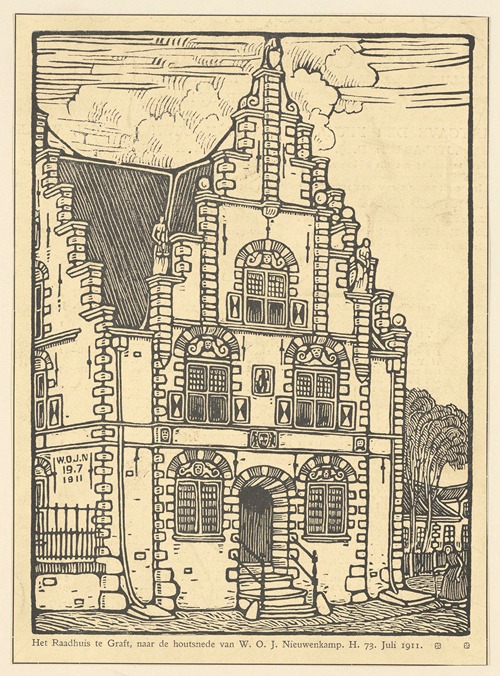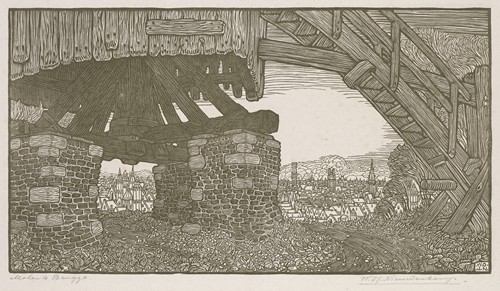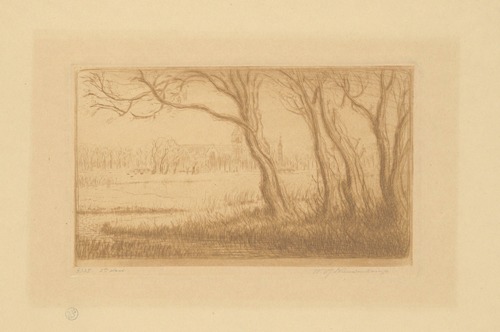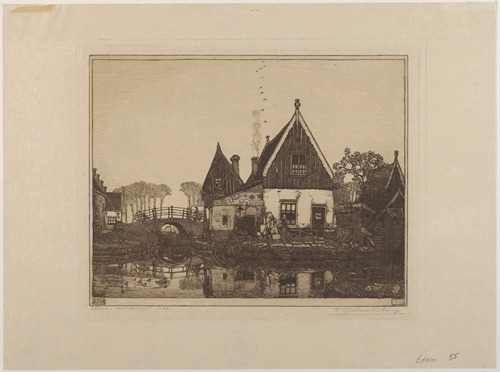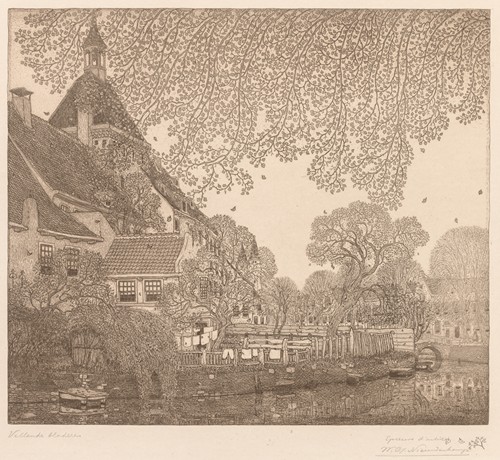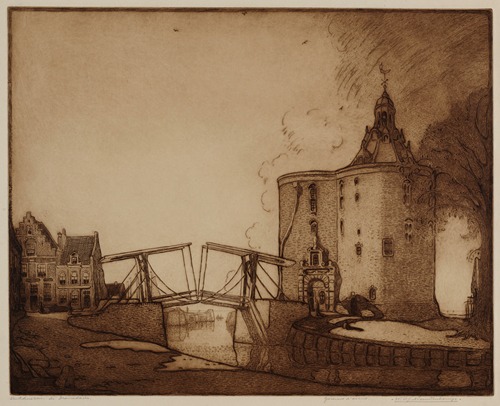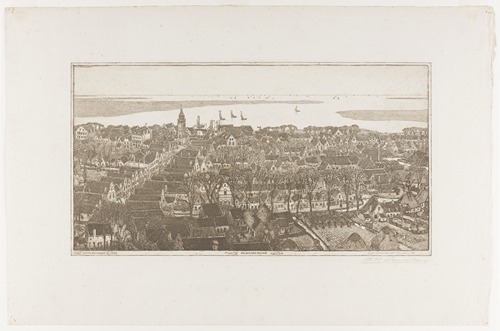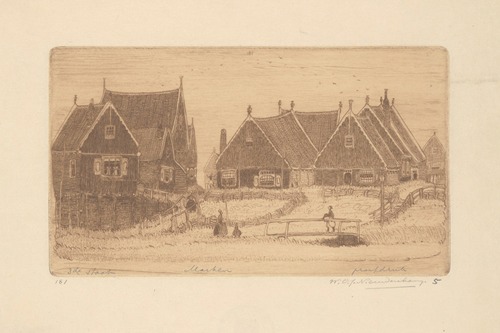
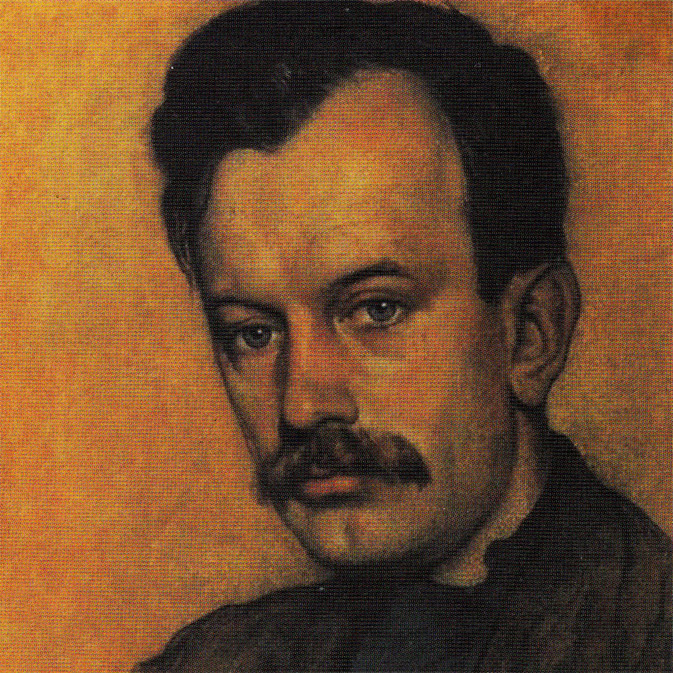
Wijnand Otto Jan Nieuwenkamp was a Dutch multi-faceted autodidact. As an artist he was active as a painter, draftsman, sculptor, etcher, lithographer, and designer of book covers and of ex-libris. In addition, he was also known as a writer, architect, explorer, ethnologist and collector of East Asian art.
He was one of the first European artists to visit Bali, being greatly influenced by and himself influencing the island's art and culture, and making it better known in wider world. He was also deeply involved with various other parts of the then Dutch East Indies.
Though he took some lessons at the Amsterdamse Kunstnijverheidsschool (Amsterdam School of Applied Arts), Nieuwenkamp was mainly a self-taught artist – reckoned more a graphic artist than a painter. Working primarily in ink, his drawings were executed in rich sepia tones. There is a clear influence of Art Nouveau on his work, though he did not strictly belong to that movement.
In 1900, the year of his marriage to Anna Wilbrink, he built a houseboat called De Zwerver (The Wanderer), which was also his own nickname. In it, he sailed through the Netherlands, Belgium and Germany, holding exhibitions on board where his works could be purchased. At the time he had considerable interest in the old Dutch towns and villages of the Zuider Zee and his book on the subject was also translated to English and German.
From the late 1890s and for several decades afterwards, he repeatedly journeyed to Far East and Middle East, and in particular to various islands of the Dutch East Indies – starting with Java in 1898 and 1904, and then Bali and Lombok in 1906 and 1907. In the aftermath of the brutal Dutch military intervention of 1906, destroying the last independent kingdom on Bali, he painted the ruins of the town of Denpasar, destroyed by Dutch troops (see illustration).
The drawing appeared in his book "Bali and Lombok" (1906–1910), which also included pioneering ethnographic and archaeological studies and is considered an important early book about this island. Bali made a deep impact on Nieuwenkamp, and he returned to the island again and again over the years – not only to make his own art but to learn the Balinese traditional painting.
The Access Bali website, maintained by the island's present-day authorities, notes that Nieuwenkamp "played a critical role in creating the myth of Bali, most importantly through his support of the German doctor and amateur photographer, Gregor Krauser. Together they held the first exhibition of Balinese Art in Amsterdam in 1918, with Krauser's photos and Nieuwenkamp's drawings. It is Krauser's later book which brought many later artists to Bali".
In 1913 and 1914, he was in British India. From 1917 to 1919 he traveled to Java, Bali and Timor. In 1924–1925 he traveled to Sumatra, Java and Bali, under an assignment for the Handelsvereeniging Amsterdam (Commercial Association of Amsterdam). In 1933–1934 he traveled to Egypt. In 1936/1937 he traveled to Bali for the last time. A planned later trip was prevented by the outbreak of World War II.
Following these travels, he wrote and illustrated various articles and books. Many of his articles were published in the journal "Nederlandsch Indië, Oud en Nieuw" (Dutch Indies, Old and New). Also scientific journals published his contributions.
After 1925, much of Nieuwenkamp's work was related to the Barabudur, a major 9th-century Buddhist monument in Central Java. A scholar of Hindu and Buddhist architecture, Nieuwenkamp developed 1931 the Borobudur ancient lake theory, according to which the Kedu Plain was once a lake, and Barabudur initially represented a lotus flower floating on that lake. Nieuwenkamp's theory is up to the present the basis for discussion and debate among archaeologists and geologists, involved in research of this important site.
Nieuwenkamp was the first person to systematically describe the Bronze Age object known in Bali as the Moon of Pejeng, the largest single-cast bronze kettle drum in the world and the focus of various local legends and myths. Nieuwenkamp reproduced the Moon's famous face motif.
With his wife Anna, Nieuwenkamp had four children. The growth of his family, as well as his increasing accumulation of art objects collected on his trips abroad, forced him to abandon his houseboat and build a house on land. This move was the subject of his book My Home on the Water, My House on the Land.
From 1910 to 1920, he lived and worked at Edam in the Netherlands. Then he moved to Italy, initially drifting, then living in Rome. Later he bought a villa in Fiesole near Florence, which was the subject of a book — A Florentine Villa. There he remained until his death in 1950.
